Article
[Quiz]: Voiding symptoms progressing to retention
Author(s):
A 16-year-old female presents with irritative voiding symptoms progressing to “urinary retention.” Evaluation with a renal, bladder, pelvic sonogram shows two normal kidneys. What is the differential diagnosis?
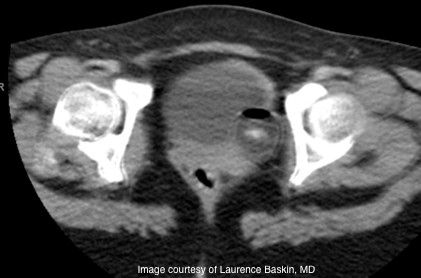
Exhibit 1. CT scan of the pelvis with a urinary catheter in place.
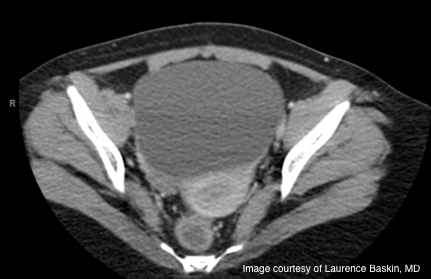
Exhibit 2. CT scan of the pelvis.

A 16-year-old female presents with irritative voiding symptoms progressing to “urinary retention.” Evaluation with a computed tomography scan is shown in Exhibits 1 and 2.
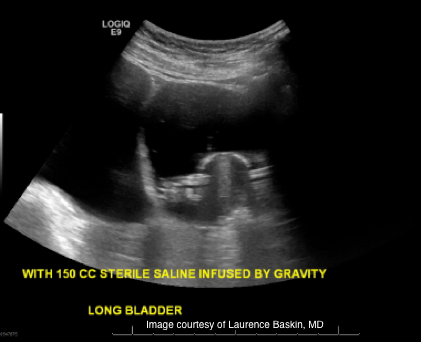
Exhibit 3. The pelvic aspect of the sonogram is shown in Exhibit 3 after injecting 150 ccs of saline into the urinary catheter.
Evaluation with a renal, bladder, pelvic sonogram shows two normal kidneys.
(Note: Safari web browser must be used to allow voting.)
Continue to the next page for the answers.
Answers
1. C. Ovarian cyst
2. A. Laparoscopic removal
Discussion
The differential diagnosis of a large, fluid-filled pelvic mass in a female should always include Mullerian structures. In this case, the large mass is a simple ovarian cyst (causing all of the irritative symptoms), and the urinary catheter is in the decompressed bladder off to the patient’s left. The patient has two normal kidneys (which would be a key fact to sort out early and not shown in the imaging), which rules out a duplicated hemivagina with one side obstructed and an ipsilateral pelvic renal nubbin (OHVIRA syndrome) as well as a duplicated system with an upper pole obstructed ureter from ureteral ectopy and/or a ureterocele. In addition, obstructed vaginas tend to have old blood and not simple fluid as shown in this case. In males, an enlarged prostatic utricle and seminal vesicle cyst should be considered in the differential diagnosis.
The urinary catheter irrigated without issues and could be seen on real-time sonogram as separate from the large ovarian cyst. The cyst was drained and removed laparoscopically (Exhibits 4 and 5), along with the effaced right ovary with resolution of her symptoms.
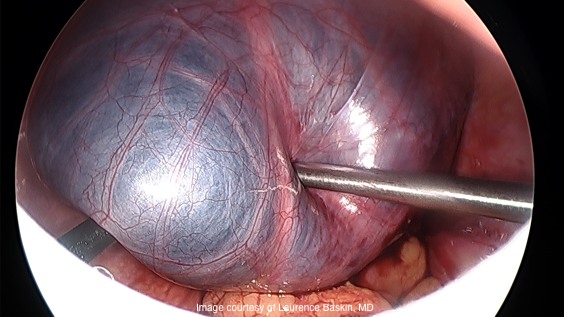
Exhibit 4. Laparoscopic image of large simple ovarian cyst about to be drained.
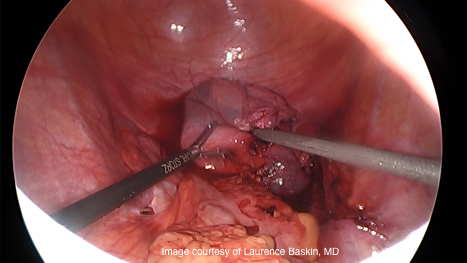
Exhibit 5. Laparoscopic image collapsed simple ovarian cyst after percutaneous drainage.

Dr. Baskin, professor of pediatric urology at the University of California, San Francisco, is section editor for Urology Times Pediatric Quiz.
Suggested reading
Ovarian pathology for the pediatric urologist. Urology 2011; 77:1455-9.
Evaluation, Treatment and Follow-up Results of Ovarian Cysts in Childhood and Adolescence: A Multicenter, Retrospective Study of 100 Patients. J Pediatr Adolesc Gynecol 2017; 30:449-55).
Want more quizzes? Click here.
Newsletter
Stay current with the latest urology news and practice-changing insights — sign up now for the essential updates every urologist needs.

















